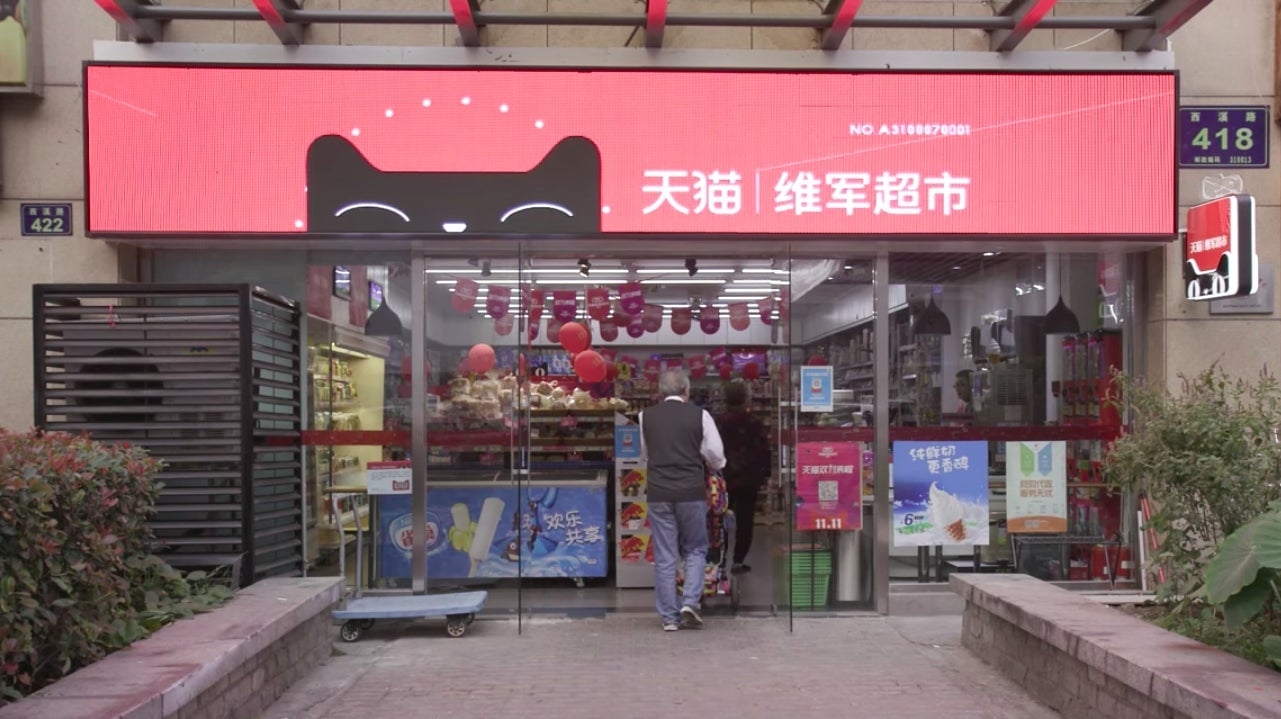Alibaba is trying to reinvent China’s mom-and-pop stores
Before Amazon began its quest for world domination, Alibaba, China’s largest online retailer, was already executing a similar strategy.


Before Amazon began its quest for world domination, Alibaba, China’s largest online retailer, was already executing a similar strategy.
Starting in 2015, Alibaba began expanding its physical presence with a series of supermarket and retail-chain acquisitions. Last year it also launched a new convenience-store concept called Hema, where customers can use a mobile app to seamlessly shop both on and offline. The company has ambitions to open 2,000 Hema stores across China in the next three to five years. It took Amazon until 2017 to make major forays into the world of brick-and-mortar.
Now, Alibaba has its sights set on a new goal: to bring its cloud-computing technology to all of China’s 6 million mom-and-pop convenience stores. In the process, it’s building out its physical footprint to tap into the 85% of the country’s retail sales that don’t yet happen online.
Alibaba is using a retail-management platform called Ling Shou Tong (which roughly translates to “retail-integrated”) to help store owners optimize product procurement and boost sales. Last August, Alibaba began rolling out the platform to retail shops in China for free—as long as the stores allowed the tech giant to use their storefronts as fulfillment-and-delivery centers and handed over data on their customers’ shopping habits.
Ling Shou Tong’s app gives store proprietors recommendations, based on sales analytics, on what to buy and how to display goods in their stores. In the background, it uses Alibaba’s cloud-computing and logistics businesses to create a digitally connected inventory-management system. Store owners can also use the app to place orders, fulfilled by Alibaba and shipped directly from its warehouses, eliminating the need for middlemen.
Mom-and-pops have given mixed reviews about the impact Ling Shou Tong has had on their bottom line so far. Some say the storefront decorations and in-store training accompanying the platform’s adoption provides a cosmetic facelift to their stores and makes running them easier. Others worry that relying on Alibaba’s product selection forces them to directly compete with the convenience of online shopping.
Even with the mixed reception, Alibaba’s push to widely install Ling Shou Tong has proven to be wildly successful. The company employs some 2,000 “foot soldiers,” paid by commission, to convince independent store owners to adopt the platform, Reuters reports. And ahead of last year’s Singles Day—an annual online shopping bonanza on Nov. 11 that dwarfs Black Friday and Cyber Monday—Alibaba’s platform was installed on the computer systems of 10%, or 600,000, of China’s mom-and-pops, according to the company. The stores helped Alibaba with Singles-Day logistics and played a big role, according to analysts, in boosting the company’s day-of sales to $25.3 billion, an extraordinary 40% increase (paywall) from Singles Day sales in 2016, and a new record.
Alibaba’s rivals are also aggressively trying to transform China’s physical retail space. This week, JD.com, China’s second-largest online retailer, opened a chain of high-tech supermarkets in Beijing and the first of a series of unmanned convenience stores in Shandong province. Like Alibaba, JD intends to use its brick-and-mortar presence to both reach new customers and collect data on their shopping behaviors.
Alibaba remains unique in its strategy to utilize the millions of mom-and-pop shops that often serve populations, like those in rural areas, its hasn’t yet reached through its online platforms. “We’re working to make the net in the sky and the net on the ground,” Alibaba’s chief executive Daniel Zhang said last year of the company’s goals. “We will cover all consumers seamlessly.”